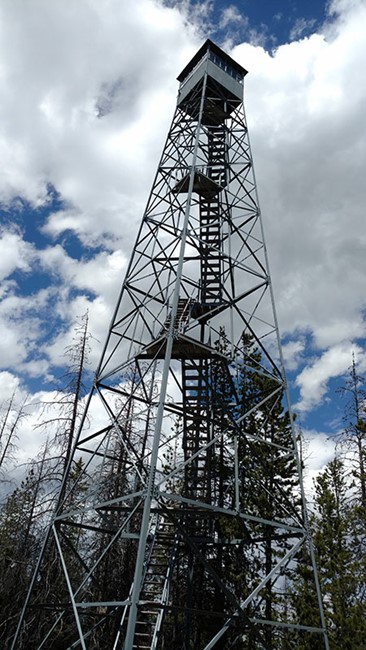
2016 photo by Luke Channer
Lookout Details
| Registry Numbers | US 264, ID 25 (view other lookouts in United States, Idaho) |
| Date Registered | June 1, 1998 |
| Nominated by | Payette National Forest |
| Location |
Payette National Forest Idaho County, Idaho |
| Coordinates |
N 45° 28.440' W 115° 02.309' (view using Google Maps) N 45° 28' 26" W 115° 02' 19" N 45.474000° W 115.038487° |
| Elevation | 7,469 ft (2,277 m) |
| Built | 1935 |
| Administered by | U.S. Forest Service |
| Cooperators | Krassel Ranger District |
Description
Possibly the most remote active lookout in the continental United States, Arctic Point Fire Lookout has been retired to standby status. The 72’ Aermotor tower with metal 7’ x 7’ cab atop a 7,516' mountain in Idaho’s Payette National Forest was constructed in 1935. A Rocky Mountain-style log cabin ground house was added in 1939. Reached only by foot or horseback on an 18 mile trail, it was listed on the National Register of Historic Places in 1994.
Payette National Forest - September 2020:
Map
Photos
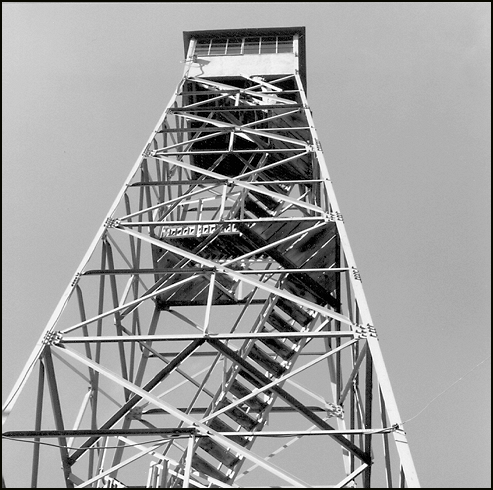
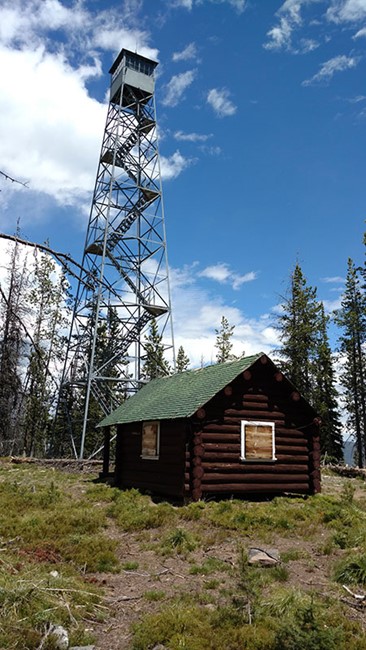
Luke Channer photo
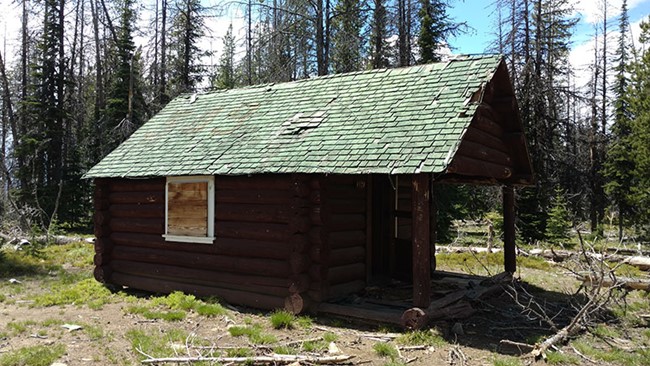
Observer's cabin (Luke Channer photo)
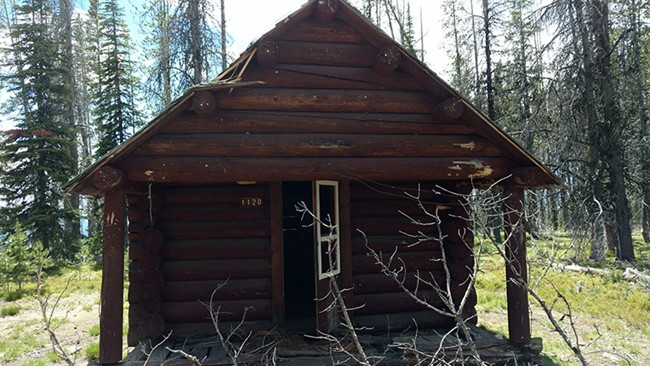
Observer's cabin (Luke Channer photo)

1936 - Emmit Routson with his pack train bringing the lookout tower parts to the remote area when it was first constructed
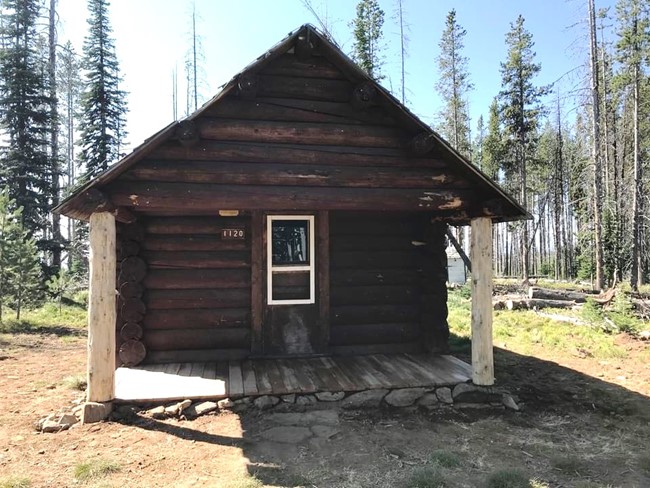
Residence cabin during 2020 stabilization work
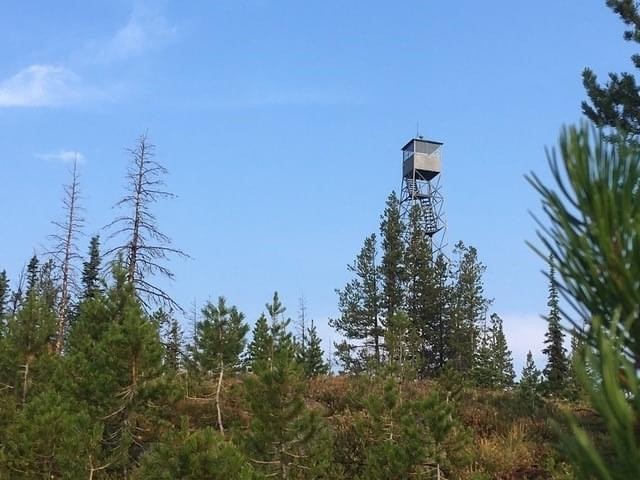
2020
Visit Reports
June 18, 2016: Luke Channer
Condition |
|
| Needs paint? | No Response |
| Shutters OK? | Yes |
| Condition of wood OK? | Yes |
| Stairs OK? | Yes |
| Glass intact? | Yes |
| Good condition? | Yes |
Electronics and Enroachments |
|
| Are electronic sites enroaching on tower? | No |
Access and Signs |
|
| NHLR sign posted? | No |
| Directions to tower signed? | No |
Staffing |
|
| Staffed? | No |
Opportunities for Volunteer Support |
|
| Volunteers staffing opportunities? | No Response |
| Volunteer maintenance opportunities? | No Response |
Other Comments |
|
| Comments | Here is a summary of my trip to Arctic Point LO on Saturday. <br /> <br />This has been a trip in the making for a number of years for me. For many years, had given up trying to get to it since the typical way in is a back country flight in to Chamberlain basin and then a 15 mile hike. I met a jet boat pilot/Arctic Creek Lodge owner four years ago who told me about an old outfitter’s trail that he knew about starting at the Salmon river upstream from his lodge. Through hours of looking at GE, I could find all but the middle third of the trail. It looked to be 5miles with 5000 gain and was not on the FS maps. <br /> <br />Jim the jet boat pilot kindly offered me a ride along with another group with plans to pick me in 24 hours on his way back up river. My initial plans were to spend an extra day hiking to Rocky point but it burned in a lightning strike fire last summer. <br /> <br />So Friday evening I met Jim at Corn Creek where the main Salmon becomes wilderness along with my hiking buddy, Dan. After a 45 min ride down river, he dropped us off at the trailhead where we decided to camp for the night rather than push up the trail with our full packs. We felt an early start with light day packs would be the quickest. After a refreshingly cool night next to the river with a full moon shining down, we had a restful night. <br /> <br />At 7 AM the next morning, we started up. The trail was easy to follow with minimal undergrowth in the lower elevations. The first mile gained 1600 ft and by three hours we were up 3500 of the 5000 feet total. With underbrush dense due to higher moisture, we lost the trail and I didn’t have any waypoints from GE to orient to the trail. I had the lookout waypoint which was a big help. We bushwacked through old burn covered in logs and steep hills covered in brush the last 1000 feet. Finally found the trail half a mile from the lookout making our descent to come uncomplicated. <br /> <br />Made it up in 5.5 hours and only had an hour to enjoy the lookout with a 5PM pickup back down on the river. <br /> <br />The lookout is a 75 ft Aermotor with all the windows intact. FS made a feeble attempt to put wire mesh and logs blocking the stairs three feet high to prevent people from climbing the tower. Had a good laugh over that given how rarely this gets visited! I only went up partway given my fear of heights and the threatening clouds overhead. <br /> <br />At one point it was thought to be the most remote staffed lookout in the US but clearly has not been used in a number of years. There are several lookouts in Montana that are long 20+ mile hikes in to them but I think this is more remote due to poor access to the trailhead. <br /> <br />The ground quarter log cabin is in need of some work. The door and screen door were wide open as we approached. The front porch floor was falling apart and a recent tree bounced off the roof. Lots of tall dead trees surround the cabin which will destroy it in the future unless they are cleared. <br /> <br />An ice cold spring 1/4 mile away was refreshing after a long hike. Richard Homes told me about it from his experience hiking to Arctic Pt several years ago which I counted on during my water preparation for the hike. To top everything off, Dan’s phones started receiving text messages and we realized we had cell service!! It was nice to talk to our wives to let them know how our adventure was going. <br /> <br />Our trip down took three hours now that we knew where the trail was leading from the lookout. The roar of the jetboat filled the canyon with about half a mile to go as the five o’clock pickup time came. After some quick packing up, we were boated up river and made it home safely. |